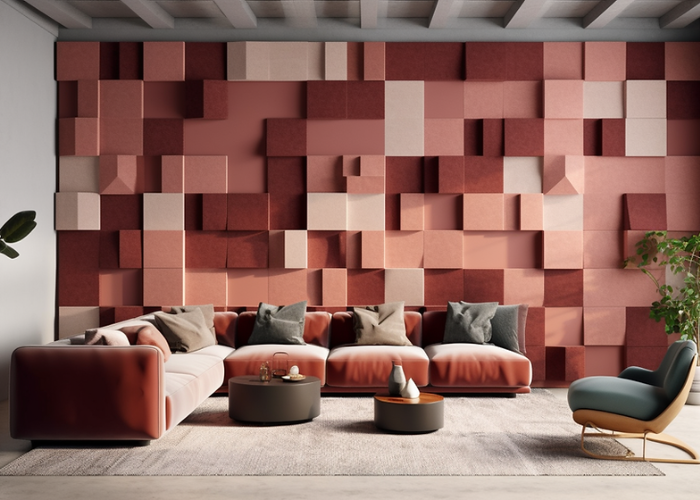In a world where sound surrounds us at every turn, the art of acoustic enhancement has emerged as a vital endeavor. Enter the realm of sound panels, unassuming yet remarkable tools that have the power to transform the way we perceive and experience sound. In this article, we dive into the intricacies of acoustic enhancement through sound panels, delving into their types, applications, benefits, and the considerations that guide their effective utilization.
Acoustic Enhancement Unveiled
At its core, acoustic enhancement involves manipulating sound within a space to achieve a desired auditory experience. This can encompass tasks such as reducing echoes, controlling reverberations, improving speech clarity, and maintaining a balanced acoustic environment. Sound panels, the unsung heroes of this endeavor, offer targeted solutions that shape the very acoustics of the spaces we inhabit.
Understanding Acoustic Principles
To fully appreciate the impact of sound panels, understanding the basic principles of acoustics is essential. Sound travels as waves, bouncing off surfaces and creating reflections. These reflections can interfere with the original sound, leading to distorted auditory experiences. Acoustic enhancement seeks to manage these reflections through absorption, diffusion, and other techniques.
Exploring the Types of Sound Panels
- Absorption Panels: These panels act as sonic sponges, soaking up sound energy and converting it into heat. Crafted from materials like acoustic foam, fiberglass, and mineral wool, absorption panels are carefully engineered to reduce reflections and reverberations. They find a natural home in spaces where clear communication and audio precision are paramount, such as recording studios and home theaters.
- Diffusion Panels: The role of diffusion is to scatter sound waves, preventing their concentration in specific areas. Diffusion panels are designed with intricate patterns and shapes that redirect sound in multiple directions, ensuring even distribution. These panels are instrumental in spaces like music studios and performance venues, where balanced acoustics are key.
- Combination Panels: Acknowledging the multifaceted nature of acoustic challenges, combination panels merge absorption and diffusion properties. These versatile panels address both the need to manage reflections and the goal of maintaining an even sound spread.
Crafting Acoustic Environments for Different Spaces
The applications of sound panels are as diverse as the spaces they transform:
Home Theaters: Sound panels in home theaters curate an immersive audio experience by taming echoes and enhancing sound clarity. They enable audiophiles to revel in their favorite movies and music without compromising on audio quality.
Music Studios: In recording studios, precise sound reproduction is essential. Sound panels in these spaces prevent excessive sound reflections and standing waves, resulting in professional-grade recordings.
Public Spaces: Venues like theaters and auditoriums employ sound panels to optimize sound distribution. These panels ensure that every seat in the house experiences high-quality, well-distributed sound.
Customization and Design Integration
Sound panels offer not only acoustic enhancement but also aesthetic opportunities. They can seamlessly integrate with architectural elements, enhancing the visual appeal of a space while elevating its auditory qualities. Customizable shapes, sizes, and patterns allow for tailored solutions that cater to both functional and artistic needs.
Installation and Configuration
Effective installation of sound panels requires a keen understanding of the room’s acoustics. Panels should be placed strategically to address specific acoustic challenges. Combining various panel types can yield a balanced and optimized acoustic environment.
Benefits and Considerations
The benefits of acoustic enhancement through sound panels are substantial:
Immersive Audio Experiences: Whether in a home theater or a concert hall, sound panels facilitate immersive audio experiences by optimizing sound quality and distribution.
Clearer Speech and Communication: In settings where communication is key, such as offices and conference rooms, sound panels enhance speech intelligibility by reducing echoes.
Noise Reduction and Privacy: Sound panels create quieter environments by absorbing or diffusing unwanted noise, offering both relaxation and privacy.
However, challenges like addressing specific frequency issues and striking a balance between aesthetics and acoustic needs must be considered.
Anticipating the Future of Acoustic Enhancement
As technology advances, the future of sound panels holds exciting potential. Smart technology integration could lead to dynamic adjustments of acoustic settings based on real-time noise levels. Additionally, sustainable and eco-friendly options are emerging to align acoustic enhancement with environmental responsibility.
Conclusion
Sound panels, these unassuming marvels, hold the power to sculpt the very fabric of our auditory experiences. By understanding their types, applications, and advantages, we unlock the potential to create spaces that resonate with harmony, clarity, and beauty. Whether in the intimacy of a home theater or the grandeur of a concert hall, sound panels orchestrate an acoustic symphony that enriches our lives in ways both subtle and profound.








Leave a Comment